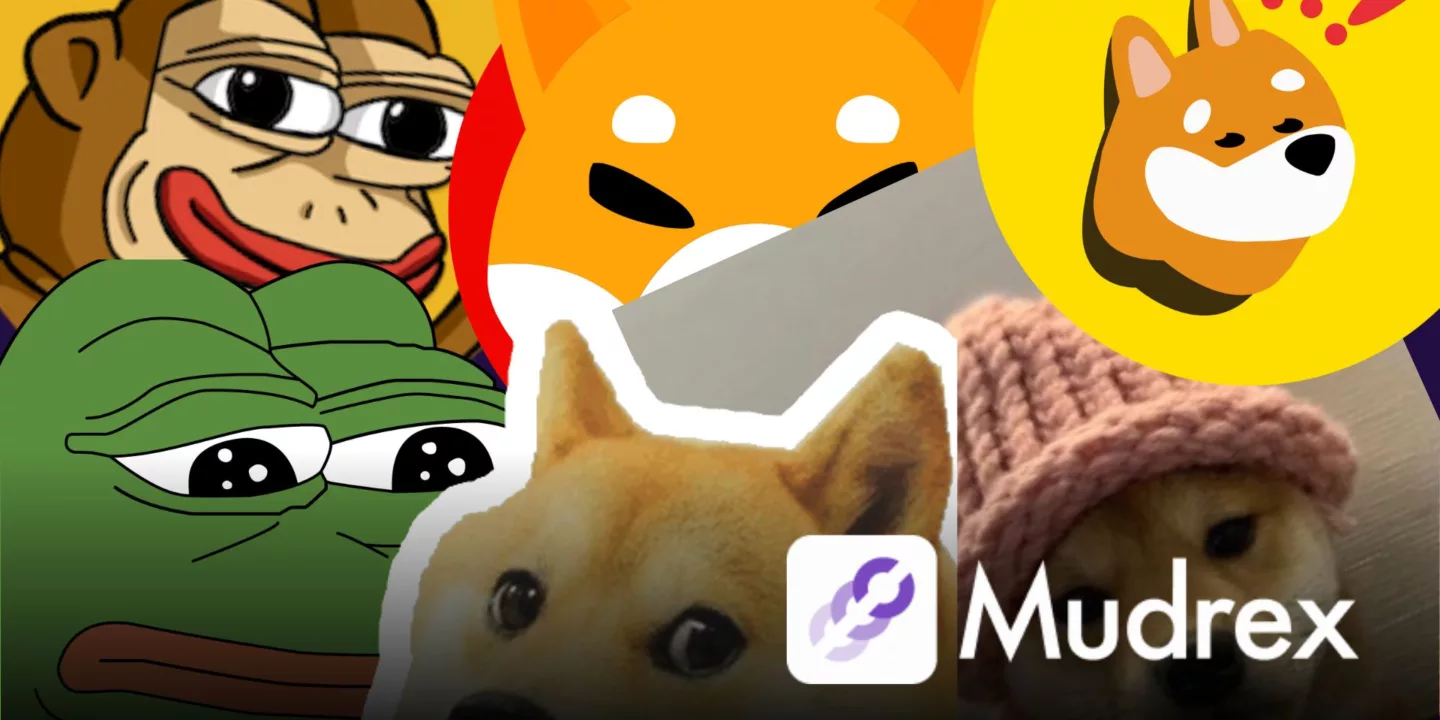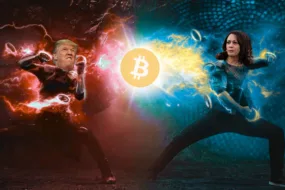
Cryptocurrency memecoins are a unique sector within the digital asset space which came into being nearly a decade ago with Dogecoin. Memecoins like Doge, Shiba Inu, Dogwifhat, Pepe, Bonk etc share a common trait: they inspire shared feelings of belonging, oftentimes without serving any real world utility. Despite being dismissed by many as valueless, memecoins continue to thrive, albeit with high risk and extreme volatility.
In this report, we explore the recent resurgence in memecoin popularity and understand the psychology behind investing in these coins.
The 2024 Meme Cycle

The GameStop saga and the rise of memecoin culture have catalyzed a new wave of retail investors who prioritize community-driven investment strategies over traditional fundamental analysis. The initial frenzy in 2021, fueled by retail traders on platforms like Reddit, demonstrated the power of collective action against institutional investors.
This marked the first wave of memecoins, with leading coins like Dogecoin and Shiba Inu establishing themselves. Beyond enthusiastic community support and exponential growth, influential figures such as Elon Musk publicly supported the memecoin culture. Musk’s endorsement of Dogecoin, which started as a joke, transformed it into a symbol of grassroots financial empowerment, encouraging retail investors to embrace the idea of “the people’s crypto.”
After enduring a brutal bear market following the highs of 2021, the memecoin sector has experienced a resurgence as the most profitable narrative so far this year. The sector’s combined marketcap stands at $40 billion compared to roughly $17 billion last year, equating to a growth of approximately 135%.


Memecoin Sector Market Cap Compared: 2023 vs 2024. Source (Left): Wayback Machine[1], Source (Right): CoinGecko[2]
Data from Artemis Terminal indicates that memcoins recorded the highest returns of 736% on average, year to date. Notably this narrative is approximately 1.3 times more profitable than the next best performing crypto sector of tokenized real world assets (RWA).

Institutional Interest in Crypto
The recent memecoin hype cycle in the crypto market has been driven by several interconnected factors. The overall crypto sector has been in a bullish uptrend since the start of the year, majorly attributed to the launch of Bitcoin and Ethereum Spot ETFs. This renewed optimism in the crypto market has drawn in a wave of retail investors eager to capitalize on the potential for gains. Memecoins, with their low entry barriers and speculative nature, have become particularly attractive to this group of traders.
Political Endorsements and Politifi Memecoins
Cryptocurrency has emerged as a focal point in the upcoming United States elections, with the potential to influence voter decisions. The intersection of politics and digital assets has given rise to a new category of cryptocurrencies known as “politifi” memecoins. These tokens, inspired by political figures and movements, have gained traction among investors and supporters alike.
Notable examples include the MAGA (TRUMP) token and the Kamala Horris (KAMA) token. The combined market capitalization of these political meme tokens has reached an impressive $559 million. The MAGA token, in particular, has experienced a remarkable surge, with its value increasing by over 1800% year to date. This dramatic rise can be attributed to two main factors: Trump’s vocal support for cryptocurrencies and speculation surrounding his potential re-election bid.
The Emergence of Networks Tailored for Memecoins
The development of more sophisticated Layer 1 and Layer 2 blockchains in the past four years has significantly accelerated the memecoin narrative, leading to the emergence of so called specialized “memechains” that cater to retail investors and traders. Historically, memecoins were predominantly launched on Ethereum, but new networks like Solana and Base are now at the forefront, offering enhanced scalability and lower transaction fees.
Base, an Ethereum Layer 2 solution, benefits from its integration with Coinbase, providing seamless payment settlements and a user-friendly environment for meme projects. Since its launch in August 2023, the number of new users on the base network has gone parabolic, crossing over 25 million.

As of today, some of the leading memecoins on Base include Brett, Toshi, and Degen. The combined market cap of base memecoins is currently at $1.18 billion.
Similarly, Solana’s high throughput and low costs have made the layer 1 a significant force in the memecoin trading world. Solana is home to several leading memecoins such as Dogwifhat, Bonk, Book of Meme, Cat in a Dog’s World, Ponke and PopCat. Solana’s total meme market cap stands at $6.6 billion.
The enthusiastic participation of Solana’s community in memecoin and small-cap trades has enabled it to challenge, and occasionally surpass, the daily USD trading volumes of Ethereum-based Decentralized Exchanges (DEXs).
Moreover, the emergence and success of memecoin generator platforms like pump.fun has positioned solana as a leading chain for memecoins. Pump.Fun allows anyone to create tokens on the Solana network at a low cost of 0.02 SOL. As of this writing, over 1.5 million tokens have been created using this platform. The platform charges users a 1% fee on transaction amounts, and to date, it has generated cumulative revenue exceeding 528,500 SOL, equivalent to approximately $80 million.

This user-friendly approach lowers the barrier to entry, enabling a broader audience—including content creators and crypto enthusiasts—to participate in the memecoin market. While both Base and Solana are far more than just “memechains”, catering to a variety of Web3 use cases such as decentralized finance (DeFi), non-fungible tokens (NFTs), and gaming, these networks have exploded the memecoin sector. These networks make it easier and cheaper to create and trade memecoins, broadening their appeal beyond Ethereum and fostering vibrant communities around them.
In summary, the combination of political endorsements, renewed bullish sentiment in the broader crypto ecosystem, the emergence of meme communities on new scalable networks and the speculative allure of memecoins has led to the recent frenzy surrounding these tokens.
The Psychology of Investing in Memecoins
Memecoin investing offers a compelling glimpse into the complex interplay of human psychology and financial decision-making. Unlike traditional assets, memecoins operate in a unique ecosystem driven by social dynamics, viral trends, and the promise of quick gains.
At the heart of memecoin psychology lies a mix of emotions and cognitive biases. The fear of missing out (FOMO) plays a crucial role, compelling investors to participate in trending tokens to not miss potential profits. This urgency is often amplified by social media hype and celebrity endorsements, creating a self-reinforcing cycle of enthusiasm.
Community sentiment serves as the lifeblood of memecoins, with collective belief often outweighing fundamental value. This dynamic fosters a sense of belonging among investors, who rally around shared memes, inside jokes, and a common vision of financial success.
The allure of quick gains taps into the human predisposition for risk-seeking behavior, particularly in an environment where traditional financial opportunities may seem limited. The volatile nature of memecoins further intensifies this appeal, offering the possibility of substantial returns in short timeframes.
Herd mentality also plays a significant role, as investors often take cues from the actions of others, leading to cascading effects in buying and selling behaviors. This collective movement can result in rapid price swings.
The Correlation between the Attention Economy and the Adoption of Memecoins
The concept of the attention economy, first proposed by economist Herbert Simon in 1971 and later expanded by Professor Thomas H. Davenport, indicates that human attention is a scarce and valuable resource. While this framework has traditionally been applied to social media platforms, we can draw parallels within the realm of cryptocurrencies, particularly in the rise of memecoins.
Memecoins represent a unique intersection of digital assets and viral content, leveraging the principles of the attention economy to drive adoption and value. Unlike traditional cryptocurrencies, memecoins derive their appeal not from technical features or practical utility, but from their ability to capture and retain public interest.
The intuitive nature of memecoins, often based on popular culture references or internet memes, makes them highly accessible and relatable to a broad audience. This accessibility, combined with their visual appeal and viral potential, creates a powerful mechanism for attracting and maintaining user engagement. In the attention economy, this engagement translates directly into perceived value and market capitalization.
Memecoins epitomize the “attention is value” paradigm. They offer a transparent form of speculative investment without complicated tech roadmaps or milestones. This simplicity appeals to a subsect of investors who appreciate the honesty about their lack of intrinsic value in a market often filled with technical jargon and promises.
This realignment of value perception in the cryptocurrency space reflects the growing influence of the attention economy. It suggests that in the digital age, the ability to capture and maintain public interest can be as valuable as traditional economic indicators. The rise of memecoins thus serves as a compelling case study in the power of attention as a driver of market value.
The Low Market Cap/Fully Diluted Valuations Debate
A growing concern among retail investors is the risk associated with low MC/FDV ratio tokens. This debate has been fueled by the frequent price declines observed in newly listed cryptocurrencies on major exchanges.
To clarify:
- Market Capitalization (MC) represents the current total value of a token, calculated by multiplying its price by the circulating supply.
- Fully Diluted Valuation (FDV) projects the total value assuming all tokens are in circulation, derived from the current price multiplied by the total supply.
The apprehension stems from the possibility that such investments may primarily serve as exit liquidity for insiders, including venture capitalists and project teams. A low MC/FDV ratio suggests that a lot more tokens will be released in the future, which could push prices down if there isn’t enough buying demand. Recent data from 2024 token launches supports this trend.

In this context, memecoins emerge as a distinct alternative. Unlike tokens with complex vesting schedules, most memecoins launch with their entire supply in circulation, resulting in identical MC and FDV figures. This characteristic addresses several pain points experienced by retail investors:
1. No risk of future token unlocks diluting value
2. Absence of venture capital involvement, which can lead to preferential treatment and insider advantages
3. Elimination of artificial scarcity created by low initial circulation
The appeal of memecoins thus extends beyond their cultural resonance. They represent a shift towards what many perceive as a more fair investment landscape. Retail investors, disillusioned by the often opaque tokenomics of traditional crypto projects, find in memecoins a transparent alternative free from the complexities of token vesting and the potential for insider manipulation.
Navigating the Memecoin Landscape: A Guide for Investors
Memecoin Dynamics
Unlike other cryptocurrencies, memecoins derive their value primarily from social dynamics rather than technological innovation or utility. Their extreme volatility is driven by factors such as social media trends, celebrity endorsements and community sentiment. This volatility underscores the importance of approaching memecoin investments with caution and a clear understanding of the associated risks.
Key Evaluation Criteria:
Examining memecoins requires a shift from traditional fundamental analysis to a more socially-oriented evaluation. Investors should focus on:
1. Community Engagement: Assess the size, activity, and enthusiasm of the project’s community across various platforms.
2. Cultural Relevance: Evaluate how well the memecoin resonates with current internet culture and trends.
3. Branding and Virality Potential: Analyze the project’s ability to create and sustain viral marketing campaigns.
4. Developer Credibility: Research the background and reputation of the team behind the project, if known.
5. Market Sentiment: Gauge overall perception and hype surrounding the coin in the broader crypto community.
6. Liquidity and Trading Volume: Examine the coin’s presence on exchanges and its trading activity.
While technological aspects shouldn’t be entirely disregarded, they often play a secondary role in a memecoin’s success. The ability to accurately gauge social momentum and predict viral trends becomes paramount in this space.
By adopting this nuanced approach, investors can better navigate the memecoin market, balancing the potential for high returns with an understanding of the inherent risks of these digital assets.
Closing Thoughts
The term “meme,” coined by British evolutionary biologist Richard Dawkins in his 1976 book, The Selfish Gene, has evolved from a biological analogy to a cornerstone of digital culture. Memes now function as a universal language, bridging cultural divides and fostering shared identities in the digital age. Their power lies in the ability to distill complex ideas into easily digestible, shareable content that resonates across audiences.
Memecoins represent the convergence of this cultural phenomena with the world of finance. With the inherent virality and community-building aspects of memes, these digital assets have carved out a unique niche in the cryptocurrency landscape. They offer more than just potential financial returns; they provide a sense of belonging and shared experience that traditional investments often lack.
The rise of memecoins reflects a broader shift in investment culture, particularly among young retail investors. These assets appeal to a generation that values community engagement, cultural relevance, and the democratization of finance. While their speculative nature presents risks, memecoins’ ability to tap into collective humor and identity makes them a powerful force in shaping the future of digital finance.
As the line between cultural trends and financial instruments continues to blur, memecoins stand as a testament to the evolving nature of value in the digital age. They challenge traditional notions of investment and highlight the growing importance of cultural resonance in the financial world.

References
Top meme coins by Market Cap (nd.) Wayback Machine.
Top meme coins by Market Cap (nd.) CoinGecko.
Sector Performance (nd.) Artemis Terminal.





